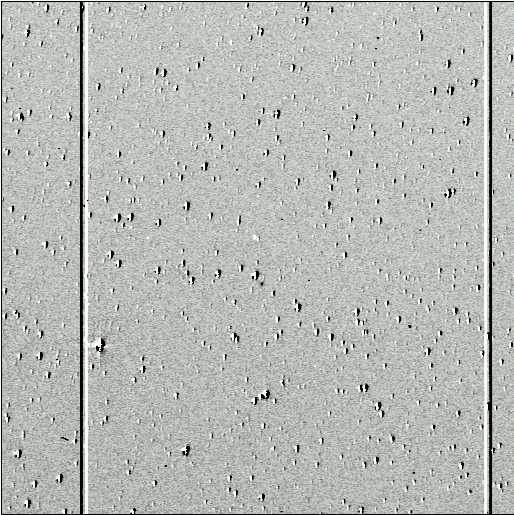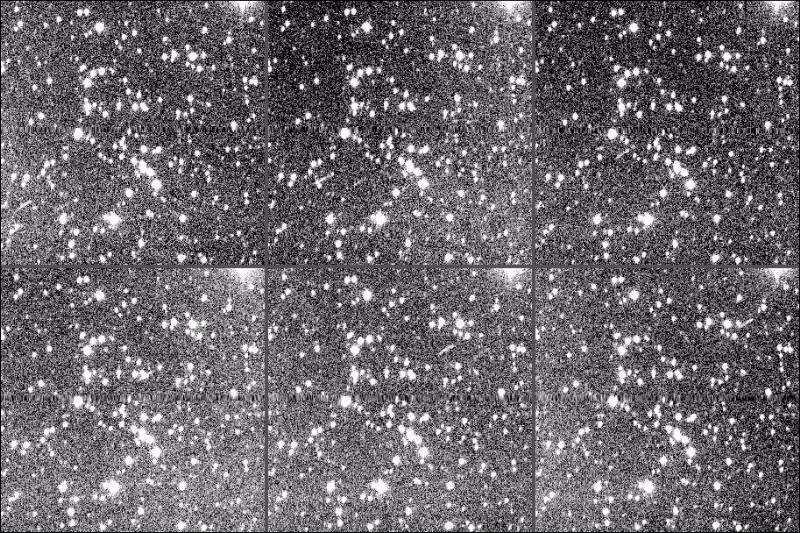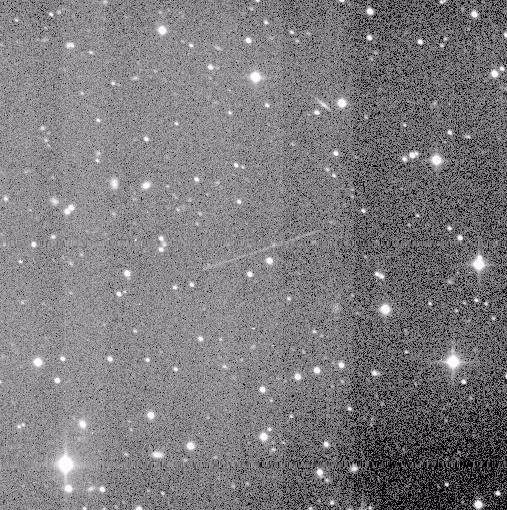SPACEWATCH® has also imaged several other objects, such as manmade spacecraft.
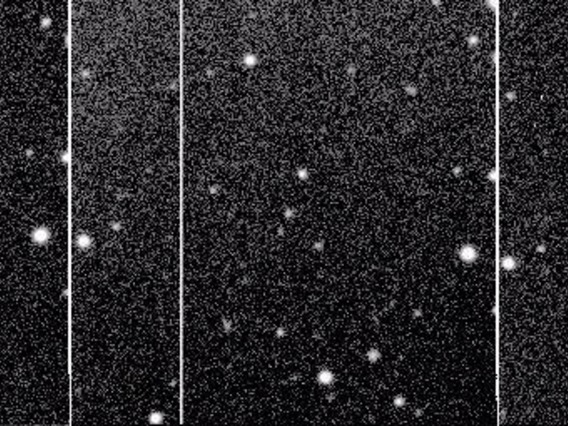
Cassini - SPACEWATCH® imaged the Cassini Spacecraft on the night of October 23, 1997 as it departed Earth 8 days after launch. It was 2.8 million kilometers from Earth when the following images were obtained. The image of the 20th magnitude spacecraft is near the center of each of the mosaic of 3 images. Observer credit: Joe Montani.
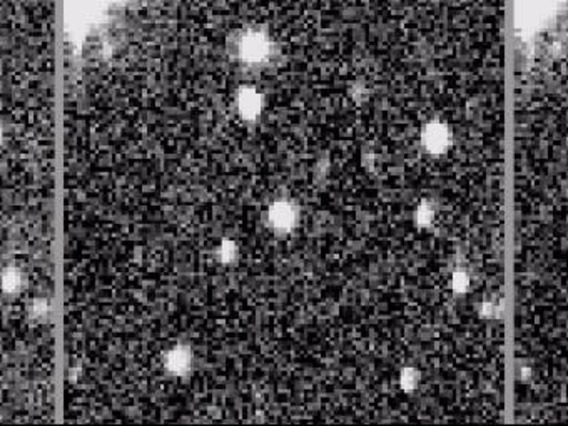
Galileo - SPACEWATCH® imaged the Galileo Spacecraft on the night of November 28, 1992 as it made its second close flyby of Earth. It was 8.06 million kilometers from Earth when the following images were obtained - at the time, a record distance for an observation of a man-made spacecraft. See if you can find the very faint 22nd magnitude image in this mosaic of 3 consecutive images.
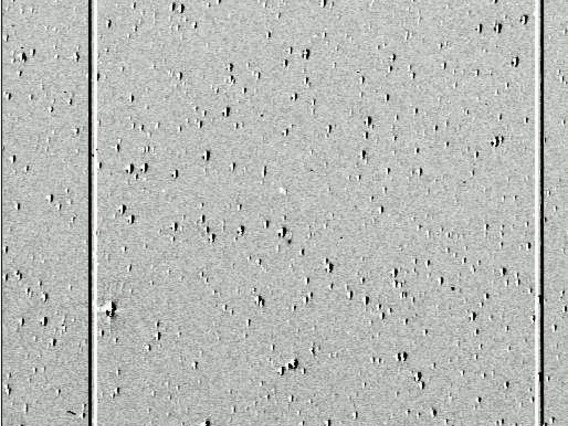
1987 OA - See also the mosaic shown below of the NEAR spacecraft (below). This was one of the possible targets of the Clementine 2 spacecraft mission. The asteroid had not been seen since a month after its discovery in 1987. The image shown is the result of subtracting 2 images taken about 40 minutes apart. Since the object was in relatively heavy Milky Way, it is difficult to see in the original images but stands out nicely as a black and white pair of images separated by some distance while field stars appear as black/white images that are involved with one another. 1987 OA moved about twice the distance that a Main Belt asteroid moved between images.
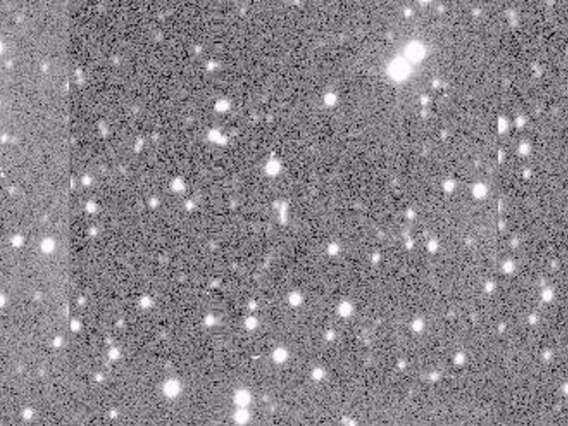
NEAR - Images of the NEAR spacecraft taken by SPACEWATCH® on 1998 January 22 - less than 1 day before its closest approach during its Earth flyby. Jeff Larsen obtained this set of images of the NEAR spacecraft as it approached Earth for a gravitational assist flyby on its way to asteroid (433) Eros. These images were obtained on 1998 Jan. 22 UT with the SPACEWATCH® Telescope. This mosaic is comprised of 3 images, each 4.3 arcminutes square with north at right, west at bottom. You can see the faint trailed images of NEAR at the center of each of the 3 images that make up the mosaic. The images were obtained on 1998 Jan. 22 between 09:22 and 09:35 UT with the SPACEWATCH® Telescope. The spacecraft was about 565,000 km from Earth at the time of observation. The Spacecraft was estimated to be about magnitude V=18.3 in these images. The mosaic was prepared by Jim Scotti from data obtained by Jeff Larsen.
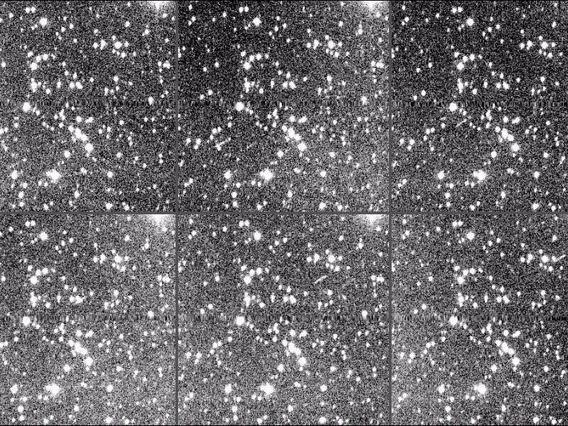
NEAR - See images of the NEAR spacecraft taken by SPACEWATCH® about 16 hours after launch. Robert Jedicke managed to get the following images of the NEAR spacecraft as it headed away from Earth on its way to (433) Eros. Click here to see a mosaic of 6 images obtained on 1996 Feb. 18 UT with the SPACEWATCH® Telescope. For a reverse video version of the same image, click here. This mosaic is comprised of 6 images, each 5.3 arcminutes square with north at top, west at right. You can see the faint trailed images of NEAR and its booster traveling from about 8 o'clock to 2 o'clock in the frames. The images were obtained on 1996 Feb. 18 between 12:12 and 12:45 UT with the SPACEWATCH® Telescope. The spacecraft was between 310,000 km and 320,000 km from Earth at the time of observation.
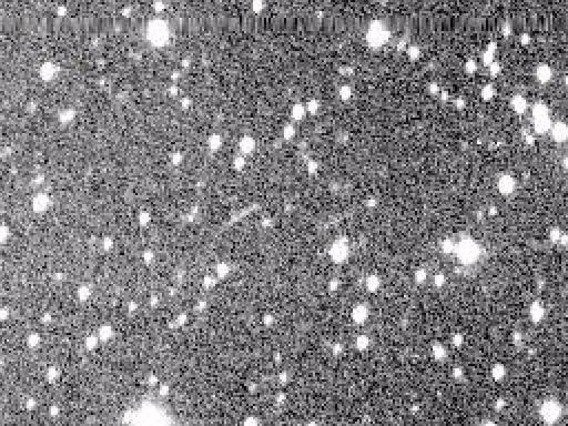
NEAR - This is a closeup of the first image of NEAR, taken on 1996 February 18 at 12:12:29 UT. The image is 4.5 arcminutes square with North on top and East at left. The NEAR spacecraft is the brighter trail to the left (east) near the center of the image, while the fainter trail is that of the booster. The spacecraft was estimated to be about V magnitude 20-20.5, while the fainter booster is perhaps about V magntiude 21. Thanks go to George Lewis at JPL for providing an ephemeris for the spacecraft. The image and mosaic was prepared by Jim Scotti in data obtained by Robert Jedicke.
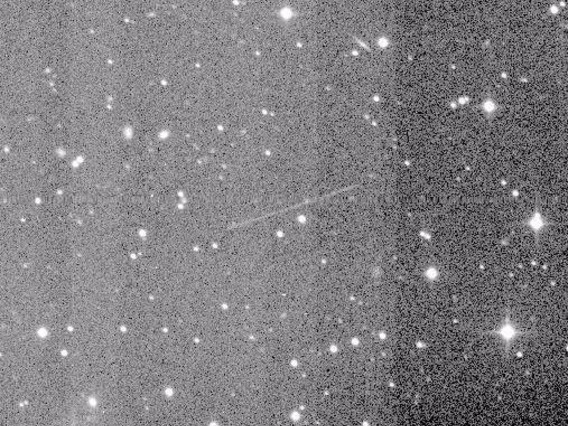
Geotail - SPACEWATCH® recently imaged the Geotail Spacecraft on the night of 1997 May 10 by Jeff Larsen. The spacecraft was about 186,000 kilometers away from Earth at the time. Click on the thumbnail above to see the full image which is about 9 arcminutes square with North at top and West on the right. The spacecraft appears as a faint trail near the center of the image. Our thanks go to George Lewis at JPL for the Geotail ephemeris.




